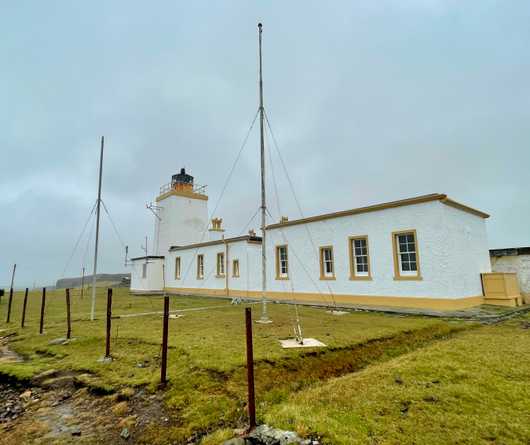Esha Ness

Located near the westernmost extremity of Northmavine, Esha Ness Lighthouse was built between 1925 and 1929 to replace a temporary light tower that was established in 1915 to warn shipping of the Ve Skerries, a rocky outcrop 8.5 miles to the west. Unfortunately the lighthouse didn’t prove itself to be a total success, as an Aberdeen Trawler named Ben Doran wrecked there with loss of all hands shortly after the lighthouse entered service.
Set atop impressive 200ft cliffs made up of jagged pyroclastic rocks, in a very remote and windswept location, the light station was the last manned lighthouse to be designed by a member of the Stevenson family, who were responsible for the design of almost all of Scotland's lighthouses. By the time the light entered service in 1929 automated acetylene and parafin fuelled lights had been in service around Scotland’s coast for several decades, and this paved the way for automation. Esha Ness Lighthouse was converted to automatic operation in 1974, when the single keeper’s dwelling was sold into private ownership.
The most notable feature of this station is the 12 meter tall square tower, which bares similarities to the lighthouse on Duncansby Head which was built in 1924, although Esha Ness lighthouse is of a simplified design, without the decorative castellated gallery wall. The tower was built using concrete as local stone was found to be unsuitable. It rises from the corner of a single story dwelling, designed for just one light keeper. Atop the tower is an octagonal lantern room with one tier of triangular glazing, complete with a conical roof and ventilator. The original fresnel lens was at some stage replaced by a rotating sealed beam unit, which itself was replaced sometime after 2017 by a small fresnel lens, which produces a white flash every 12 seconds, with a beam visible for 25 miles.


